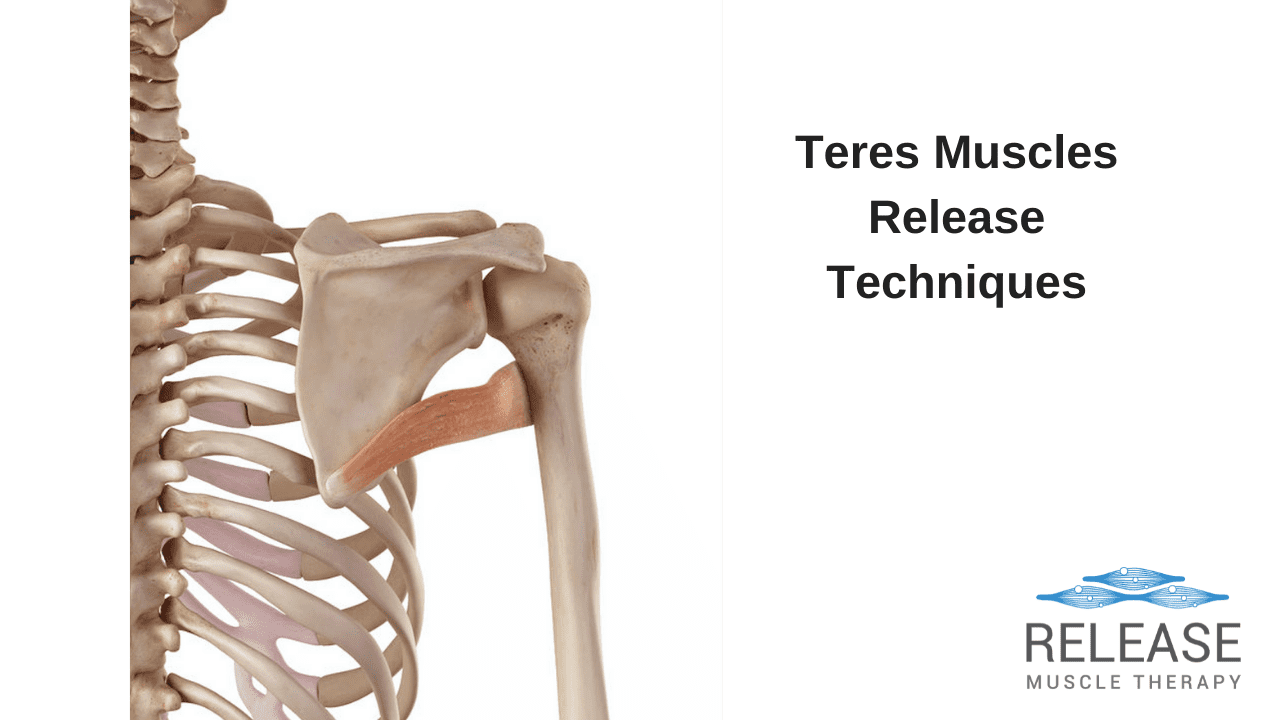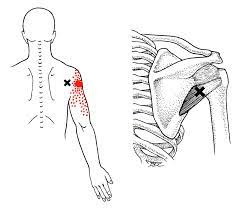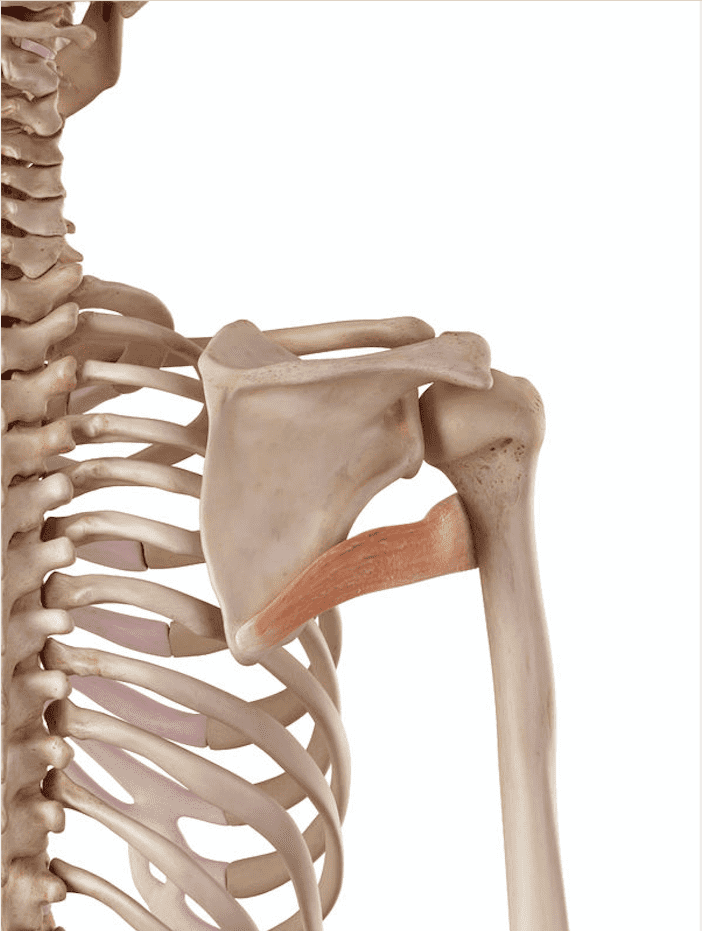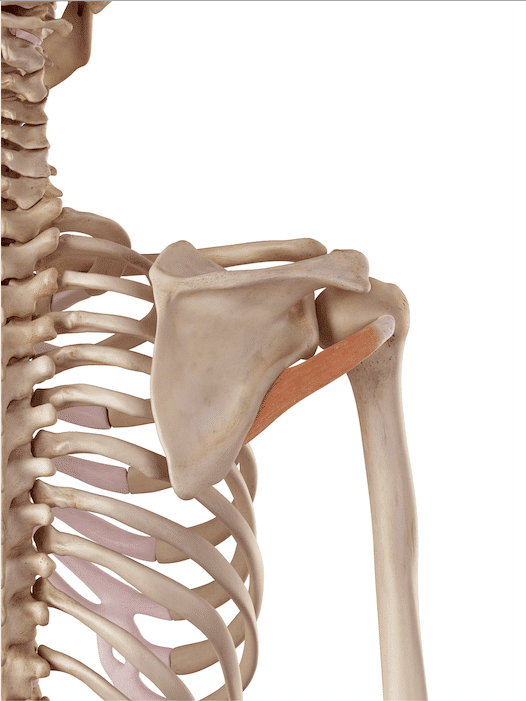Wednesday, December 28, 2022
Monday, December 12, 2022
How To Sleep With SI Joint Pain - How To Modify Each Position For SI Joi...
Thursday, December 8, 2022
TMJ Massage Tool | A Complete Review Of The Gentle Jaw TMJ Massage Tool
The Best TMJ Massage Tools for Self Release Therapy
TMJ (Temporomandibular Joint) disorder is a common condition that affects the jaw joint and surrounding muscles. It can cause pain, discomfort, and limited mobility in the jaw, leading to headaches, neck pain, and even ear pain. Massage therapy is a popular and effective way to alleviate TMJ symptoms, and there are several tools that can be used for self-release therapy at home. In this article, we will explore the best TMJ massage tools for self-release therapy.
How Massage Helps with TMJ
Massaging the jaw, neck, and surrounding muscles can help to relieve tension, reduce inflammation, and improve circulation in the area. By promoting relaxation and reducing pain and discomfort, massage therapy can improve overall jaw function and mobility. Additionally, massage therapy can help to reduce stress, which is a common trigger for TMJ symptoms.
The Best TMJ Massage Tools
Here are some of the best TMJ massage tools for self-release therapy:
1. Jaw Massagers
Jaw massagers are small, portable devices that are specifically designed to target the jaw and surrounding muscles. These devices can be used to apply pressure to the jaw and neck, relieving tension and reducing pain. Some popular jaw massagers include the TMJ Therapy Wand and the TMJ Therapy Pro.
2. Trigger Point Massagers
Trigger point massagers are designed to target specific areas of the body that are causing pain and discomfort. They can be used to apply pressure to the jaw, neck, and temples, relieving tension and reducing inflammation. Some popular trigger point massagers include the Thera Cane and the Body Back Buddy.
3. Acupressure Mats
Acupressure mats are designed to stimulate pressure points in the body, promoting relaxation and reducing pain. They can be used on the jaw, neck, and temples, providing deep tissue massage that helps to relieve tension and improve circulation. Some popular acupressure mats include the Spoonk Acupressure Mat and the EZ Shiatsu Pillow.
4. Foam Rollers
Foam rollers are a versatile tool that can be used to massage the jaw, neck, and surrounding muscles. By applying pressure to the area, foam rollers can help to relieve tension and reduce pain. They are also a great tool for stretching and improving flexibility, which is important for overall jaw health.
How to Use TMJ Massage Tools
Using TMJ massage tools is simple and easy. Start by applying gentle pressure to the jaw, neck, and surrounding muscles, focusing on areas that feel tight or painful. Gradually increase the pressure, taking care not to cause discomfort. Hold the pressure for a few seconds before releasing, and repeat as needed. It's important to be mindful of your jaw and neck during massage therapy, listening to your body and adjusting your technique as needed.
Conclusion
TMJ disorder can be a painful and debilitating condition, but massage therapy is a effective way to alleviate symptoms. Whether you prefer jaw massagers, trigger point massagers, acupressure mats, or foam rollers, there is a TMJ massage tool that is right for you. By using these tools regularly, you can help to reduce pain, improve circulation, and promote relaxation in the jaw and surrounding muscles.
Thursday, December 1, 2022
Auvon Seat Cushion Review - Seated Cushion For Sciatica + Coccyx Pain
Tuesday, November 29, 2022
Release Muscle Therapy - TMJ Massage - Temecula + Murrieta CA
Monday, November 28, 2022
Saturday, November 26, 2022
Friday, November 25, 2022
Sunday, November 13, 2022
Sunday, November 6, 2022
Thursday, September 29, 2022
Saturday, September 3, 2022
Graston For Plantar Fasciitis | How Do You Use Graston For Plantar Fasci...
Saturday, August 20, 2022
Massage Gun For Plantar Fasciitis | The Best Massage Gun For Plantar Fasciitis
Sunday, July 31, 2022
Saturday, July 30, 2022
Plantar Fasciitis - How To Tape Your Own Foot At Home
Friday, July 29, 2022
Plantar Fasciitis - How To Self Release By Rolling - Tennis Ball, Golf Ball
Wednesday, July 6, 2022
Double Up Roller Review - Foam Roller Alternative
Friday, July 1, 2022
Wednesday, June 29, 2022
Tuesday, June 28, 2022
Is NLP Or Hypnosis Better?
Monday, June 27, 2022
Sunday, June 26, 2022
Wednesday, June 22, 2022
Release Muscle Therapy - Calf + Ankle Massage - Temecula + Murrieta CA
Tuesday, June 14, 2022
Monday, June 13, 2022
Friday, June 10, 2022
Thursday, June 9, 2022
Wednesday, June 8, 2022
Wednesday, June 1, 2022
IASTM Tool Review: FAT Bar - MyoBar - Edge Tool - T Tool
Monday, May 16, 2022
Monday, May 2, 2022
Saturday, April 30, 2022
Teres Release - Self Myofascial Techniques

The Top Teres Release Techniques
The teres major and minor are shoulder muscles that can be commonly associated with a variety of aches and pains in this region.
Therefore, they should be addressed through myofascial release techniques, stretching, and exercises aimed at restoring optimal function.
Teres Major Anatomy And Function
Teres Major Muscle
Origin: Inferior angle and lower part of the lateral border of scapula
Insertion: Intertubercular sulcus of the humerus
Function/s: Medial rotator and adductor of the humerus
Functional action: Decelerate external rotation and abduction of the humerus
Innervation: Lower subscapular nerve and thoracodorsal nerve
Teres Minor Anatomy And Function
Teres Minor Muscle
Origin: Lateral border and adjacent posterior surface of scapula
Insertion: Greater tubercle of the humerus
Function/s: External rotation and adduction of humerus
Functional action: Decelerate internal rotation and abduction of the humerus
Innervation: Posterior branch of axillary nerve
Teres Trigger Points
Trigger points in the teres major and minor are very common and can be very tender. They can be a challenge to find with direct pressure in to the muscle, but can be easily found when using a "pinching" approach directly into the belly of the muscle.
Teres trigger points tend to refer to the shoulder and can also go down the arm. Neuromuscular therapy techniques such as static pressure, or muscle energy technique are very helpful for quickly releasing these points.

How To Stretch Your Teres Minor
Stretching the teres minor is easy. Stand up with your back next to a closed door. Hold the door handle. Take a small step forwards, and then lean forwards. You should be able to feel a stretch around the outside of your shoulder blade.
It's important to go easy with this stretch, especially when you're first starting out, and always go only to comfort.
How To Stretch Your Teres Major
To stretch the teres major, stand up and place your arm up towards your ear. Wrap your arm over and around your head. You should feel a gentle stretch just beneath your arm pit. Pull against your arm, and side-bend.
Teres Self Myofascial Massage with Foam Roll
Both teres muscles can be worked with a foam roller for myofascial release. This sidelying position makes the work more tolerable as the majority of your bodyweight is on the floor.
The most important part of this rolling technique is to make sure you continue to raise the bottom arm toward the sky to lengthen the teres muscles as you're rolling them.
Need help fixing piriformis issues? Click below and lets talk.
Wednesday, April 20, 2022
Thursday, April 14, 2022
Saturday, April 2, 2022
Temecula Pain Relief Massage Therapy: What You Need To Know
Temecula Pain Relief Massage Therapy: What You Need To Know
When your body aches, you want to feel relief. And while a traditional massage can help ease your pain, it doesn’t do the trick when you’re looking for long-lasting relief. That’s where the benefits of pain relief massage therapy come in. If you’re ready to start feeling better, here’s everything you need to know about getting a pain relief massage in Temecula.
Walk it Out
If you’re experiencing back pain, the first thing you should do is walk it off. Taking a nice, hot bath can help with muscle tension, and helps to calm your nerves. When you’re able to relax your muscles, your back will have a better chance of recovering. If you’re experiencing back pain, avoid bending, lifting, or dragging heavy objects. These types of movements put excess stress on your spine and can delay or prevent healing altogether. Instead, try walking or doing gentle yoga poses that help to stretch and strengthen your muscles.
Plan Your Workouts
If you have a job that requires you to stand or sit for long periods of time, you should plan ahead. When you’re in pain, it’s very common to try to push through the pain, or work through it. But, in doing so you’re actually making it worse. Long periods of time sitting or standing are the worst for your back. Sitting for long periods of time causes your body to become stiff, which can lead to poor posture and spinal compression. When your back is stiff and compressed, it’s not able to heal correctly.
Get a Supportive Back brace
When your back is in pain, it’s more likely that you’ll favor the affected area. This can lead to wear and tear on your spine, and even arthritis. A supportive back brace can help to distribute weight evenly across your back, and provide support while you’re sitting or standing. There are many brands, styles, and variations of back bracing available. It’s recommended that you try several on, and find the one that feels the most supportive and helps to distribute the weight across your back.
Do Some Exercises
When your back is in pain, it’s easy to feel a little too relaxed. It’s important to try to stay active while you’re healing, but you also have to be careful not to over do it. Doing too much too soon can end up causing more harm than good. The key is to do some light stretches, and exercises that you can do at home that don’t require much effort. Simple movements like rolling your neck, rocking back and forth in your chair, and stretching out your legs and trunk can do wonders for reducing any inflammation, and improving your flexibility.
Find a Good Massage Therapist
Not only is massage a relaxing and enjoyable way to relax, it can also help to improve your flexibility and decrease any inflammation in your muscles. Many people who suffer from chronic pain will benefit from regular back pain massages. But, you don’t have to hire a professional masseuse just for yourself. Try booking a session with a massage therapist that you trust, and that you’ve seen in the past provide good therapeutic relief.
Don’t Ignore It
Back pain is the body’s way of protecting itself. When you ignore the pain, or try to push through it, it’s only going to get worse. Instead, accept that you’re in pain, and take the proper steps to get yourself healthy. When you’re experiencing pain, it’s important to be patient. You should allow your body time to heal.
Summing up
When you’re experiencing back pain, the first thing you should do is walk it off. Taking a nice, hot bath can help to relax your muscles, and calm your nerves. When you’re able to relax your muscles, your back will have a better chance of healing.
Next, plan your workouts. When you’re in pain, it’s very common to try to push through the pain, or work through it. But, in doing so, you’re actually making it worse. Long periods of time sitting or standing are the worst for your back.
If you have a job that requires you to stand or sit for long periods of time, you should plan ahead. When you’re in pain, it’s very common to try to push through the pain, or work through it. But, in doing so, you’re actually making it worse. Long periods of time sitting or standing are the worst for your back.
Finally, try to find a good massage therapist that you trust, and that you’ve seen in the past provide good therapeutic relief. When you’re in pain, it’s important to be patient. You should allow your body time to heal, and get back pain relief massage.
If you’ve ever experienced back pain, you probably know how difficult it can be to get relief. From decades of poor posture, to a car accident, to a job that requires you to spend lots of time hunched over, we’re all susceptible to back pain at some point in our lives. When you’re experiencing back pain, even the smallest of tasks can feel impossible. Your back has to compensate for the pain, and it’s not likely to heal properly if you’re not able to function normally. That’s why prevention is so important.
Release Muscle Therapy
28822 Old Town Front Street Suite 306
Temecula, CA 92592
424-442-0663
Tuesday, March 29, 2022
Monday, March 28, 2022
Release Muscle Therapy - Foot + Ankle + Plantar Fasciitis Protocol - Tem...
Trigger Point Pressure Bar - Best Massage Tool To Save Your Hands
What is the Trigger Point Tool and What Can You Do With It?
Trigger points are little knots in muscle that can cause intense, sharp pain. They are referred to as knots because they feel like they are “knotting” your muscles together. They are also referred to as myofascial trigger points, because that’s the name used for the group of nerves that supply them.
Although trigger points are usually not dangerous on their own, they can become problematic when they are connected to another muscle nearby. This allows them to refer pain and cause other muscles to shorten and tighten in response. For instance, if you have trigger points in your hip that refer pain to your thigh, when you move your thigh, the muscle fibers in your thigh are pulled taut and shortened, which causes you to feel the pain in your hip. This is often referred to as “pain traveling up the referred chain.”
While trigger points may feel like knots, they are actually very small in size and do not form a distinct structure like a knot. They are more like groups of spindle-shaped muscle fibers that have become entwined with each other.
This makes it difficult to find them with the naked eye. That’s where the Trigger Point Tool comes in. This tool has small needles that are inserted into the trigger points to feel for them and find them. Once found, they can then be worked on so they dissipate and no longer refer pain.
This article lists different ways you can use the Trigger Point
Self Care
The Trigger Point Tool is also a self-care tool. It can help you relieve some of the pain caused by trigger points and allow you to return to your daily activities more quickly.
Gentle Exercise
The most common way to work on trigger points is with gentle exercise. Gently moving the muscle in question causes the trigger point to release, which can help reduce pain and muscle tightness. It also helps to relieve other symptoms that may result from a trigger point including fatigue, lack of range of motion, numbness, or tingling sensations.
A good rule of thumb for when you should be doing gentle exercise for trigger point relief is if your muscles are feeling tight, sore, or knotted up. This often happens after a strenuous workout like lifting weights or running. The best time to do this type of gentle exercise is right afterward when the muscles are fresh and relaxed.
Another way to work on trigger points is through repetitive passive motion (RPM). This involves gently moving the affected area back and forth as it should move in normal function. This removes any adhesions that could be causing knots in the muscle fibers as well as helps prevent them from becoming inflexible by loosening them up so that they can resume their natural movement pattern without triggering tension and pain signals in other surrounding muscles.
Gentle exercise and RPM can both be done at home using tools such as foam rollers, tennis balls, lacrosse balls, bolsters or even your own hands.
Myofascial Massage
Myofascial massage is a type of bodywork that focuses on the soft tissue, with special attention paid to the muscles, fascia, tendons and ligaments. The goal of this form of massage is to restore normal motion by alleviating the tension caused by muscle imbalances and pain patterns.
One technique used in myofascial massage is trigger point therapy. Trigger point therapy is commonly used to help relieve pain or discomfort in a specific area. This technique involves using a tool called a trigger point tool, which has small needles that are inserted into the trigger points directly. Once found, they can then be worked on so they dissipate and no longer refer pain.
The mechanism underlying myofascial massage is related to fascial planes and the way they transmit force through connective tissue throughout the body. The insertion of needles into these trigger points causes the release of chemicals like serotonin and endorphins while also loosening tight muscles and stimulating blood flow into those areas.
Stretching
A great way to relieve tension and reduce muscle tightness is to stretch. Try out these different stretches that can help you feel better:
1. Cross one foot in front of the other, standing on your tiptoes and gently pulling your heel towards your buttock.
2. Stand up on your toes with your arms by your side, then lean forward slowly until you feel a stretch in the back of your leg. 3. While sitting or lying down, bend one knee so that it touches the ground while the opposite leg remains straight, keeping both feet flat on the ground at all times.
Applying Compression
If you are in pain and cannot move a certain area, applying compression may provide relief. This can be done with a bandage, towel, or even your own hand. Another option is to use a foam roller on the area of your body that is painful.
Stretching
Trigger points often contract muscles nearby and cause them to shorten when they are present. A simple way to stretch those muscles is by applying gentle pressure to the muscle group and pushing it away from the trigger point. This will cause the muscle fibers in the muscle group to lengthen again, which will provide relief from pain associated with trigger points. Plus, stretching helps improve blood flow, which supports healing and recovery from injuries.
Massage
When applied during a massage session, pressure applied to trigger points can help reduce inflammation and release toxins that have built up in these areas. When toxins are released into the bloodstream during massage, it helps relieve symptoms such as headaches and sinus issues that usually accompany trigger points.
Conclusion
It is not easy to find the time for self-care. The first step is to make sure you are using trigger point tools that are in alignment with your own needs.
If you tend to have tight muscles, try a gentle exercise. If you have tension in your neck and shoulders, try a neck and shoulder massage. If you are experiencing a lot of pain or discomfort, try applying compression.
If you start using these self-care tools and see the benefits, it’s easy to build up a routine that enables you to take care of yourself.



